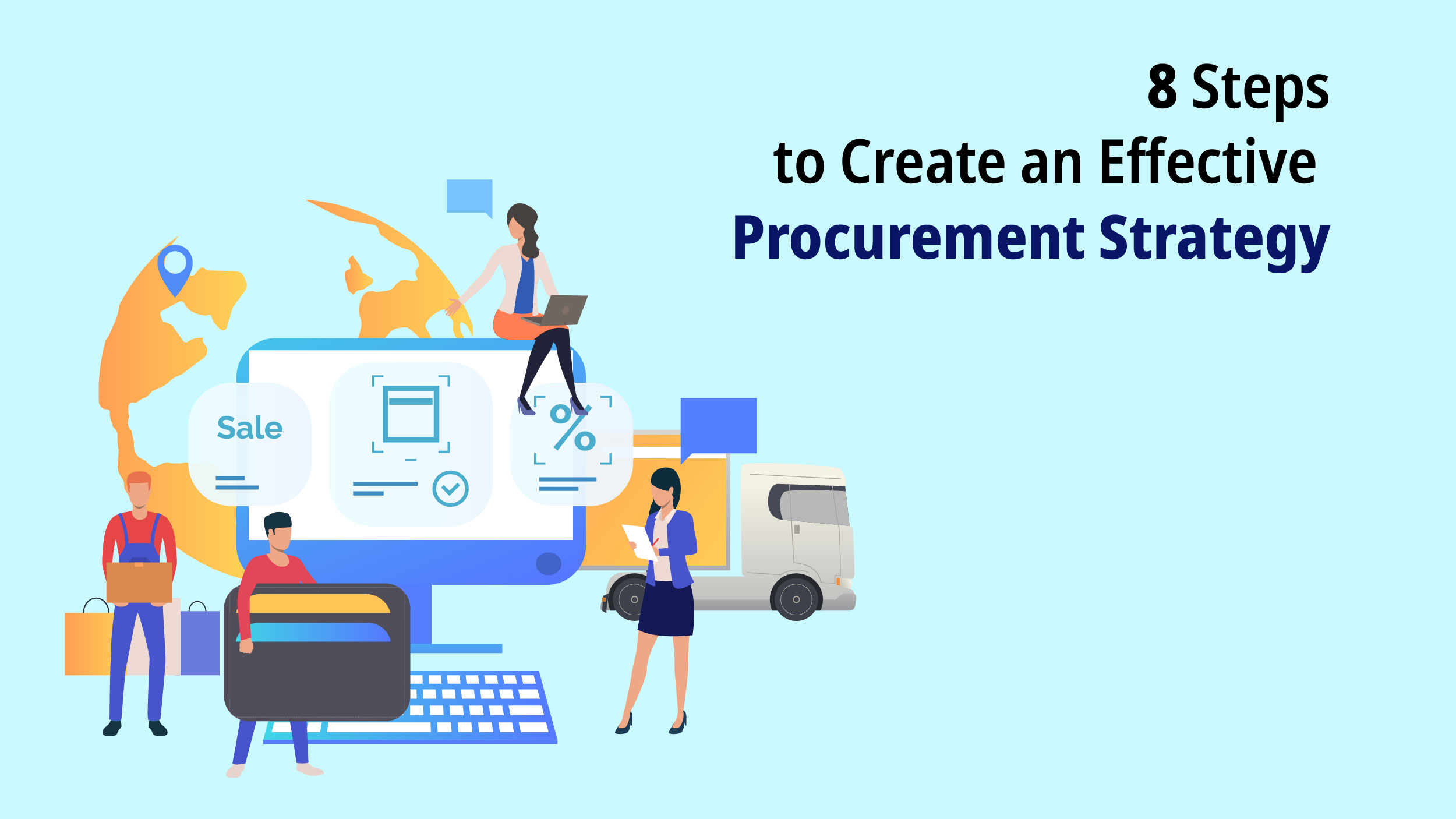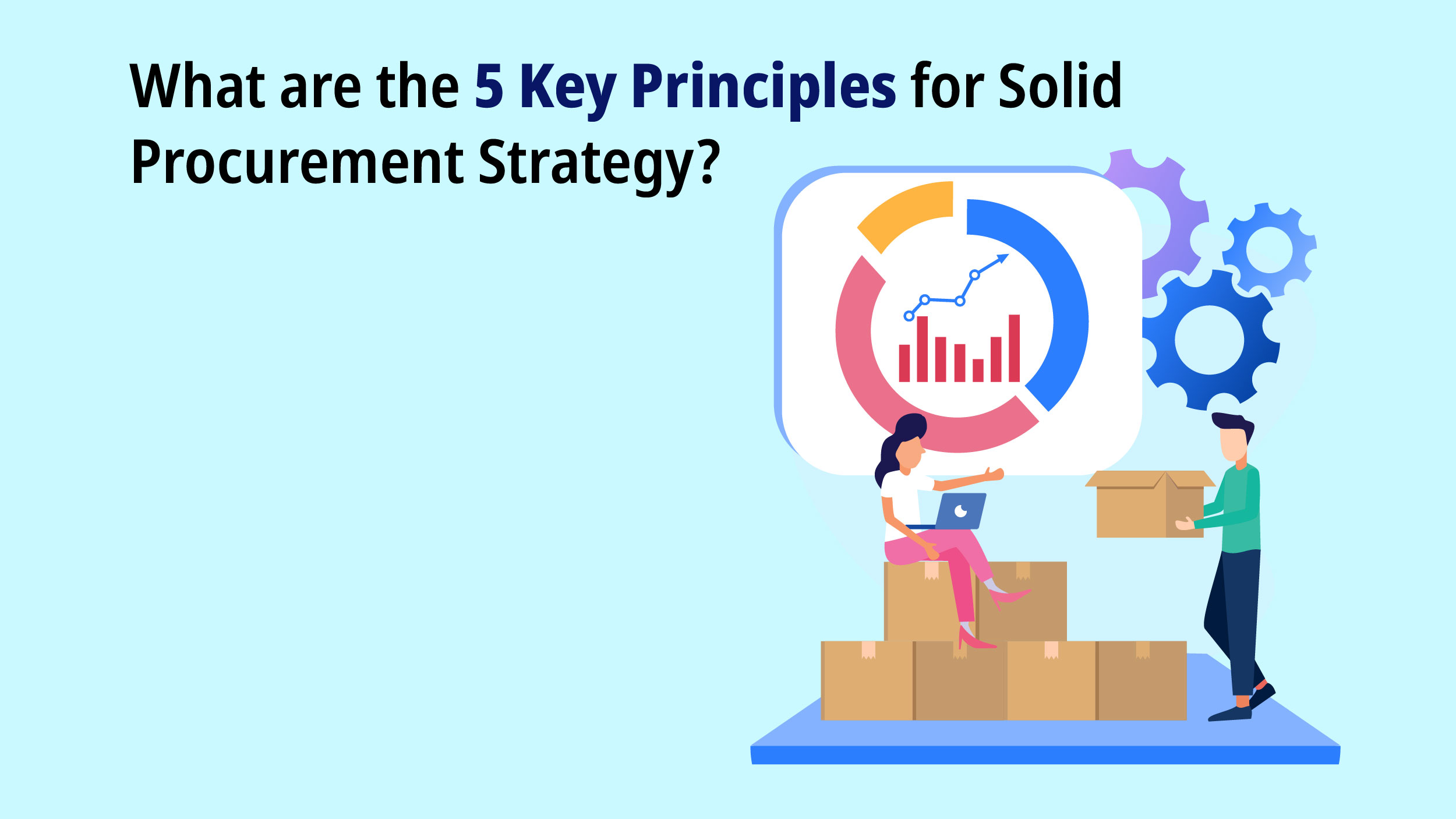Running a business is not a joke. Are you struggling to synchronize procurement with business goals while cutting the overall cost? All you need is a clear procurement strategy. It helps you make effective decisions, streamline the complete process, improve supplier relationships, and ultimately lead you to a competitive advantage. Let’s see how to build powerful strategies that help your company accomplish its business objectives and enhance profitability.
What Is Procurement Strategy?
A procurement strategy is a long-term strategy for purchasing goods from reliable vendors that will fulfill your orders on schedule and within the law. There are several crucial factors to consider while making a decision, such as the resource allocated, the total cost, and any potential issues. Common procurement strategies include risk reduction and organic strategies.
Gartner reports that 83% of multinational corporations believe that building a customer-centric supply chain strategy and procurement is critical to enhancing their brands in 2023. An organization may select one or more priorities based on business needs.
Also Read: How to Streamline Your Logistics Operations for Maximum Efficiency?
8 Steps to Create an Effective Procurement Strategy

Below are eight steps you should go through to avoid mistakes as well as discover cost-saving opportunities:
1. Get Procurement Software Working
If your company is still relying on manual procurement processes, chances are it will spend more money because of human errors, delays, and late payments. By automating manual data entry and other inefficiencies, procurement software enhances productivity while at the same time minimizing instances of error.
This software simplifies the whole procure-to-pay process by identifying gaps in procedures without requiring a person to do it. By 2028, the market for procurement software is expected to be worth $9.5 billion. Businesses are adept at adopting such tools to minimize human error.
2. Analyze Organizational Spend
The initial stage in developing the best purchasing method is to assess how your organization currently utilizes its funds. To do this, obtain information from suppliers, internal stakeholders, and all other parties involved in the procurement process. Beyond that, this data will be a valuable knowledge base within your organization that sets up your strategy as well. Consider using tools such as total cost of ownership (TCO) to expose hidden costs related to a product or service beyond its price at first purchase.
Conduct a fact-based analysis to align your procurement techniques with other functions and business goals. Question the status quo and challenge assumptions to uncover more opportunities for savings.
3. Assess Market Conditions
Once you’ve completed the internal analysis of your business needs, it’s time to shift the focus externally and examine supply markets and their conditions. Collect relevant data from suppliers and potential suppliers to stay informed. Make sure to keep this data up-to-date over time to ensure its relevance. By following best practices and getting to know your market and suppliers better, this step will be a breeze.
4. Define Your Goals
After identifying the business needs, it’s time to develop a vision of what needs to be done. You can utilize the data in your current processes from the previous steps to identify the irritation points in your procurement process.
After those are identified, prioritize them in descending order of the bottom-line effect each has on your organization. You can use tools such as a SWOT analysis to identify the status of your current procurement functions.
5. Procurement Policies
You already know what needs to be improved upon at this point. It’s time to compile a list of best practices for procurement, which will assist you in eliminating any inefficiencies that may still be present in your process. The first step in the process is to update your procurement strategy to take the risks found in the SWOT analysis into account.
6. Create a strategy
With all the data and information you’ve collected, you need to create a procurement strategy that includes the objectives you wish to achieve and how they’ll be accomplished.
The objectives must be quantifiable, time-bound, and as realistic as possible. The strategic plan will itemize the procedures that will be employed to meet the predefined objectives. This strategy can also include a ‘big idea’ that will eventually extend the frontier of what’s possible.
7. Create A Digital Procurement Strategy
Using the data and information you’ve gathered from the previous steps, you need to draft a digital procurement strategy.
Digital strategy should be given top priority since it allows organizations to spend more time with suppliers and the strategic aspect of procurement instead of administrative tasks and transactions. A digital strategy will enable businesses to deploy the resources they need to secure outsized gains and make their procurement process agile.
8. Implement, Monitor, And Improve the Strategy
After implementing the digital strategy, you’ll need to monitor and measure the progress and success of the rollout.
What are the 5 Key Principles for Solid Procurement Strategy?

Successfully managing and optimizing procurement involves following five key principles that have proven to be highly effective. These principles provide the foundation for achieving top-notch procurement performance.
- Keep the procurement chain flowing smoothly.
- Manage supplier risks like a pro.
- Maintain a centralized supplier database for easy access.
- Develop the ability to predict future trends using analytics.
- Be part of the company’s innovation system to stay ahead.
Final Take on Building a Winning Procurement Strategy
In the end, a clearly defined procurement strategy is not something organizations can afford to overlook. Today, procurement activities should be perfectly in line with the overall business objectives, and by streamlining processes, optimizing supplier relationships, and focusing on the bottom line, organizations can achieve their goal of lowering costs and improving overall supply chain efficiency.




